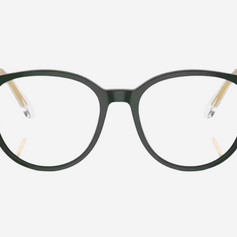Summer is approaching fast, and it’s about time to buy yourself a new pair of sunglasses. While shopping for sunglasses you will need to keep some points in mind.
There are different colors of tints available in the market and every tint color has its own effects and importance.
Neutral Gray Lenses
A neutral gray tint has been the most popular color for sunglasses in North America for a long time. Because of its neutral absorption of all colors, light intensity is reduced without color distortion or imbalance, which is a very important factor when proper color perception is essential, for example, a pilot who needs to read different colored dials, gauges, or maps, a driver who might have difficulties differentiating colors of traffic signals, or a naturalist watching birds, animals, or flowers. In short, gray lenses are recommended whenever you need protection from intensive light or glare without loss of color differentiation.
Green Lenses
A green tinted lens absorbs most of the ultraviolet and infrared light. Naturally, violet, blue, orange, or red colors are less distinguishable. Green lenses are recommended for situations with high amounts of reflected light (which contains large amounts of ultraviolet), such as glaciers and open water. They are recommended for vacations in the tropics and for use during hot weather to protect against (heat) rays. In industry, green lenses of various densities are used for welding and other high light and heat situations. They also have the psychological effect of “coolness” during hot weather and thus provide comfort to the wearer.
Brown Lenses
For many years brown tints were very popular in Europe. Brown-tinted lenses are being sold more commonly in North America. Brown lenses absorb almost all of the ultraviolet and have a very even progressive curve throughout the visible spectrum. Brown lenses are most useful in moderate to cold climates to protect against ultraviolet radiation and excessive radiation, with the added benefit of creating a “warm” visual environment.
Cobalt Blue Lenses
The cobalt-blue lenses were used to judge the temperature in a blast furnace, blue lenses are more a whim of fashion than eye protection.
Yellow Lenses
Yellow-tinted lenses are good absorbers of ultraviolet, violet, and blue. Suppressing this area of the spectrum enhances contrast in the rest of the visible spectrum. A yellow lens is therefore preferred to increase contrast in marginal light conditions, such as hunting at dawn or dusk or driving in foggy conditions, but should not be worn to protect against excessive light.
Other tints, such as pink, purple, and mauve, are variations of the tints mentioned above and are used mainly as fashion accents.
A popular type of sunglasses on the market is polarized sunglasses. Apart from the color of the lens, the axis of the polarizing material is placed in the frames so that glare coming off a flat horizontal surface is further darkened. The polarized sunglasses are good for driving into the sun, because a white, glaring highway will appear dark. People who like fishing or go boating find that glare off water is reduced considerably when wearing polarized lenses.
Cheap sunglasses usually are injection-molded plastic frames. These are not ground and or polished lenses, although they may appear to be. Cheap sunglasses are produced from flat, colored-glass sheets of low quality.
Tips on Purchasing Sunglasses
- Ultraviolet (UV) absorption. The most important factor to look for in sunglasses is the indication that they block 100% of UV rays. Check for the manufacturer’s label indicating whether the sunglasses are 100% UV absorbent.
- The bigger the lenses, the more coverage and the less damage to the eyes from the sun. Oversized glasses and wraparound-style glasses help decrease UV rays from entering the eyes from the side.
- The color of the lens and the darkness of the tint are not good indicators of the glasses’ ability to filter out UV light. Dark gray or dark green tints permit the most normal color vision.
- The price of a pair of sunglasses is absolutely no indicator of their lenses’ ability to absorb UV light.
- Polarized lenses tend to reduce reflection and glare and are especially effective around water and snow.
Ref: Stein HA, Stein RM, Freeman MI. The Ophthalmic Assistant EBook















